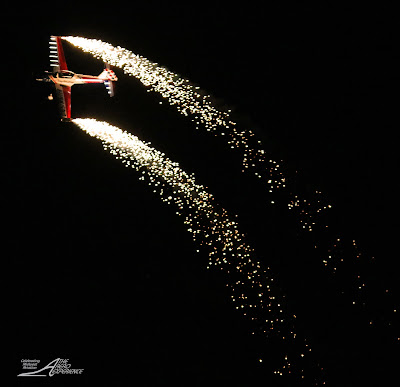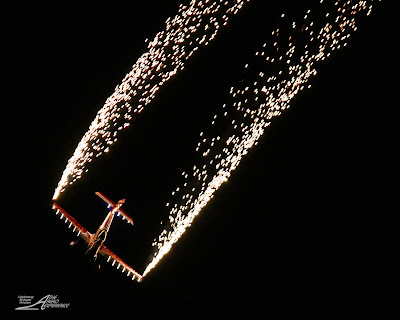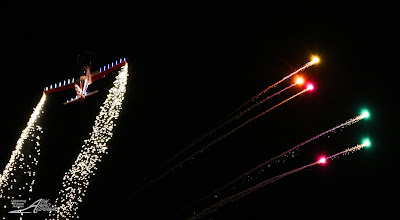 |
| By Carmelo Turdo |
On this New Year's Eve, we will continue our coverage of EAA AirVenture Oshkosh 2023, sponsored by Piston Aviation, with a celebratory look at the Saturday Night Airshow performers who made ample use of pyrotechnics along with a few shots of the fireworks display. Here we feature the Aeroshell Aerobatic Team, David Martin BE-55 Baron, Bob Carlton Super Salto jet sailplane, Matt Younkin Beech 18, Kyle Fowler LongEZ and Nate Hammond Super Chipmunk GhostWriter with the fireworks finale. For more airshow coverage, see our previous survey post and check back for future posts through the next few months. Happy New Year!






















































